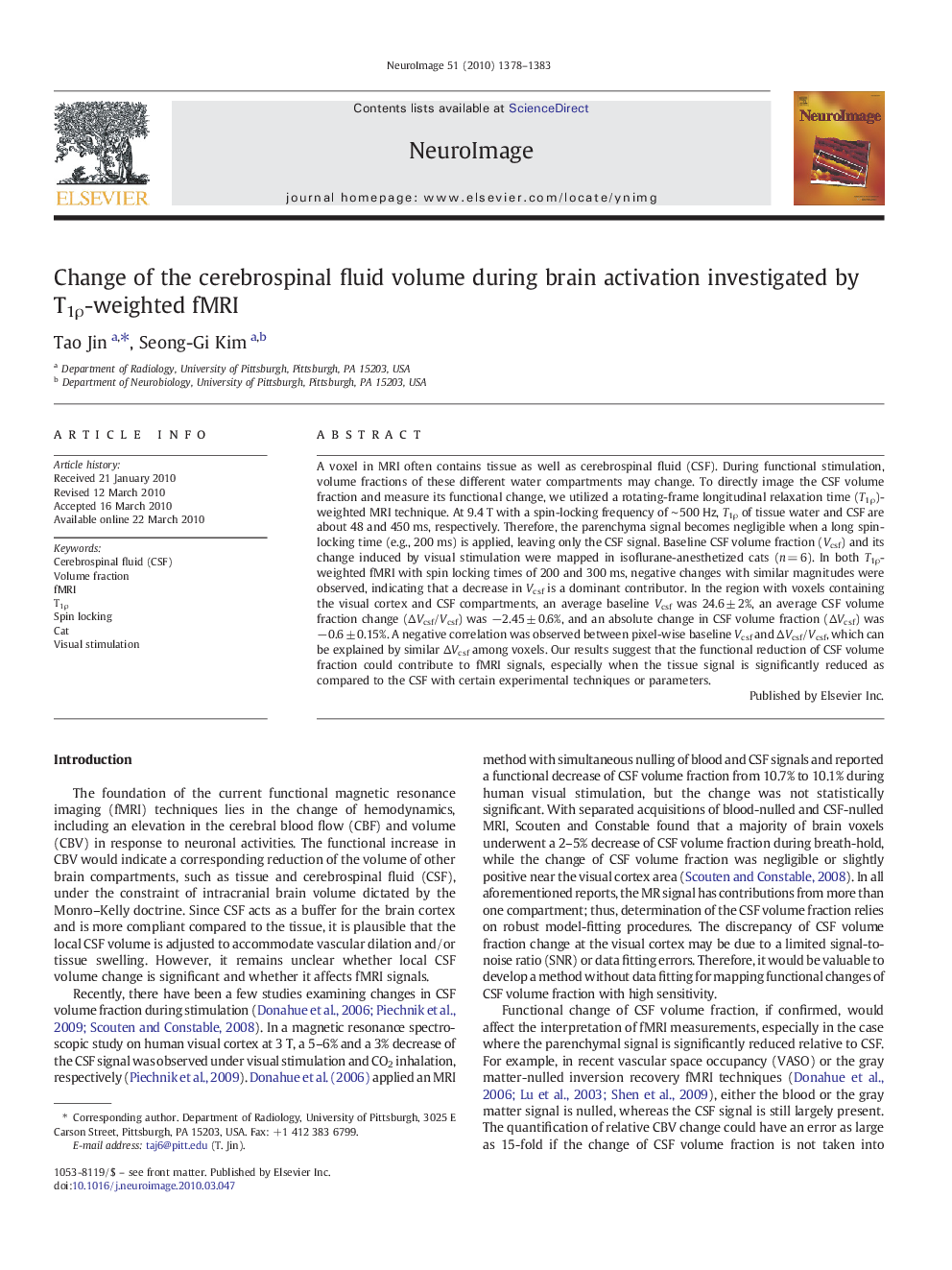| Article ID | Journal | Published Year | Pages | File Type |
|---|---|---|---|---|
| 6035815 | NeuroImage | 2010 | 6 Pages |
Abstract
A voxel in MRI often contains tissue as well as cerebrospinal fluid (CSF). During functional stimulation, volume fractions of these different water compartments may change. To directly image the CSF volume fraction and measure its functional change, we utilized a rotating-frame longitudinal relaxation time (T1Ï)-weighted MRI technique. At 9.4 T with a spin-locking frequency of â¼Â 500 Hz, T1Ï of tissue water and CSF are about 48 and 450 ms, respectively. Therefore, the parenchyma signal becomes negligible when a long spin-locking time (e.g., 200 ms) is applied, leaving only the CSF signal. Baseline CSF volume fraction (Vcsf) and its change induced by visual stimulation were mapped in isoflurane-anesthetized cats (n = 6). In both T1Ï-weighted fMRI with spin locking times of 200 and 300 ms, negative changes with similar magnitudes were observed, indicating that a decrease in Vcsf is a dominant contributor. In the region with voxels containing the visual cortex and CSF compartments, an average baseline Vcsf was 24.6 ± 2%, an average CSF volume fraction change (ÎVcsf/Vcsf) was â2.45 ± 0.6%, and an absolute change in CSF volume fraction (ÎVcsf) was â0.6 ± 0.15%. A negative correlation was observed between pixel-wise baseline Vcsf and ÎVcsf/Vcsf, which can be explained by similar ÎVcsf among voxels. Our results suggest that the functional reduction of CSF volume fraction could contribute to fMRI signals, especially when the tissue signal is significantly reduced as compared to the CSF with certain experimental techniques or parameters.
Related Topics
Life Sciences
Neuroscience
Cognitive Neuroscience
Authors
Tao Jin, Seong-Gi Kim,
